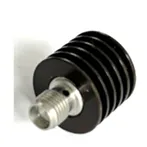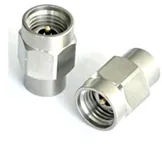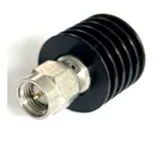Our 2.92 terminators offer precise termination for high-frequency RF applications up to 40 GHz. Designed with K-type connectors, they ensure minimal signal reflection and excellent power handling. Ideal for test setups and communication systems requiring superior performance and reliability at microwave and millimeter-wave frequencies.

RF TER, 2.92mm, 40GHz, 2W, Female, Stainless Steel, Gold Plated, Wide Frequency, Reliable

RF TER, 2.92mm, 40GHz, 5W, Female, Stainless Steel, Gold Plated, Wide Frequency, Reliable

RF TER, 2.92mm, 40GHz, 2W, Male, Stainless Steel, Gold Plated, Wide Frequency, Reliable

RF TER, 2.92mm, 40GHz, 5W, Male, Stainless Steel, Gold Plated, Wide Frequency, Reliable